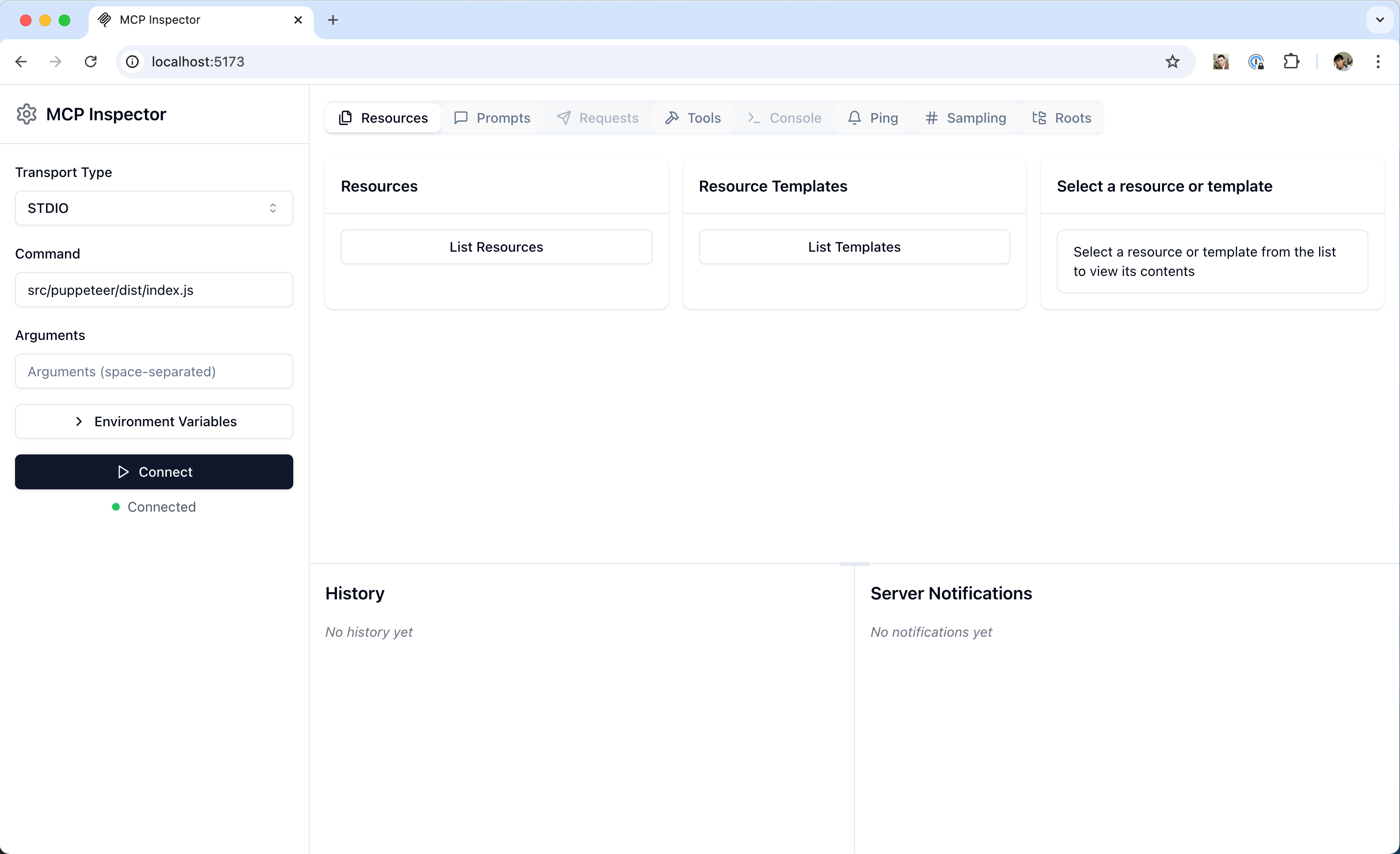Getting started
Installation and basic usage
The Inspector runs directly throughnpx without requiring installation:
Inspecting servers from npm or PyPI
A common way to start server packages from npm or PyPI.- npm package
- PyPI package
Inspecting locally developed servers
To inspect servers locally developed or downloaded as a repository, the most common way is:- TypeScript
- Python
Feature overview

The MCP Inspector interface
Server connection pane
- Allows selecting the transport for connecting to the server
- For local servers, supports customizing the command-line arguments and environment
Resources tab
- Lists all available resources
- Shows resource metadata (MIME types, descriptions)
- Allows resource content inspection
- Supports subscription testing
Prompts tab
- Displays available prompt templates
- Shows prompt arguments and descriptions
- Enables prompt testing with custom arguments
- Previews generated messages
Tools tab
- Lists available tools
- Shows tool schemas and descriptions
- Enables tool testing with custom inputs
- Displays tool execution results
Notifications pane
- Presents all logs recorded from the server
- Shows notifications received from the server
Best practices
Development workflow
-
Start Development
- Launch Inspector with your server
- Verify basic connectivity
- Check capability negotiation
-
Iterative testing
- Make server changes
- Rebuild the server
- Reconnect the Inspector
- Test affected features
- Monitor messages
-
Test edge cases
- Invalid inputs
- Missing prompt arguments
- Concurrent operations
- Verify error handling and error responses